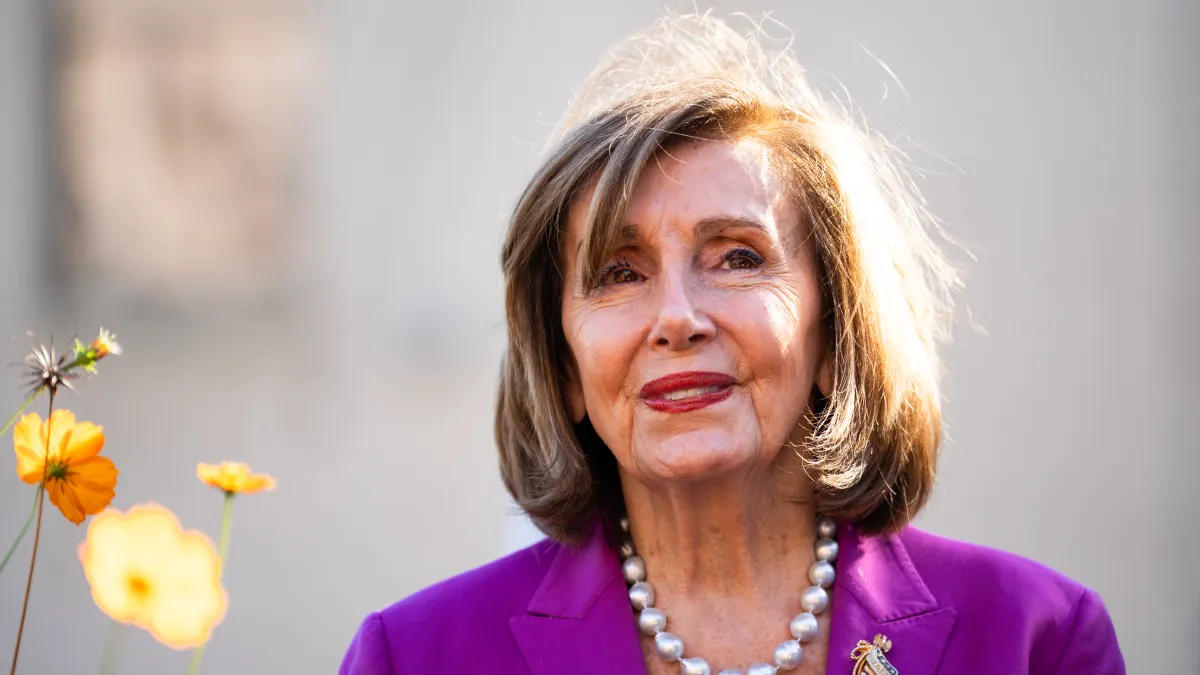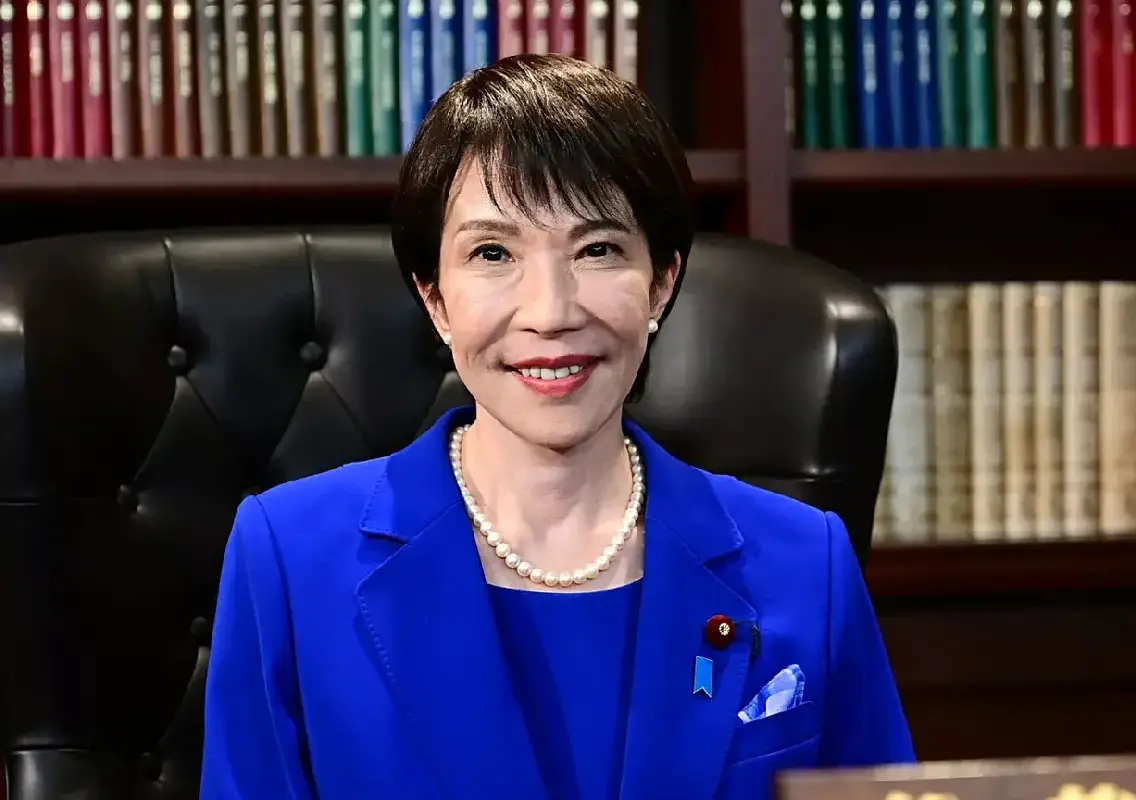Copyright NBC10 Boston

In a final love letter to San Francisco, Rep. Nancy Pelosi, who made history as the nation’s first female speaker of the House and twice served in that top job, said Thursday in a video message she will not seek re-election in 2026. "I will not be seeking re-election to Congress. With a grateful heart, I look forward to my final year of service as your proud representative," Pelosi, 85, said in her video message to San Francisco voters, interlaced with sweeping imagery of the Golden Gate Bridge, Coit Tower and other landmarks, as well as photos that captured her storied political career. The powerful California Democrat led her party in the House for two decades — from 2002 to 2022 — serving as a crucial ally for Presidents Barack Obama and Joe Biden, and orchestrating the opposition to Republican Presidents George W. Bush and Donald Trump. NBC News reported this week that Democrats in California and on Capitol Hill were preparing for her retirement announcement. While she had stepped aside as party leader three years ago, she had continued to serve in the House as a rank-and-file member and her Democratic colleagues granted Pelosi the title of "speaker emerita." Pelosi had said she would make a decision about her political future after the outcome of California’s Prop 50, the new congressional map drawn by state Democrats to combat GOP redistricting efforts in other states. Upon its passage in Tuesday’s election, Pelosi decided it was time to pass the torch. Her decision will spark a fierce contest for her liberal, deep-blue San Francisco seat at a moment when Democrats across the country are embracing a new generation of leaders. U.S. & World “As we go forward, my message to the city I love is this: San Francisco, know your power,” Pelosi said in her video announcement. “We have made history; we have made progress. We have always led the way, and now we must continue to do so by remaining full participants in our democracy, and fighting for the American ideals we hold dear.” A former chair of the California Democratic Party, Pelosi, was first elected to the House in a special election in 1987 to replace the late Rep. Sala Burton. Since then, Pelosi has won every bid for re-election by wide margins and has been one of her party's most prolific fundraisers and polarizing figures. Even before her announcement, at least two Democrats had already launched bids to replace her: state Sen. Scott Weiner, 55, and wealthy former tech executive Saikat Chakrabarti, 39, a co-founder of the progressive outside group Justice Democrats that helped propel Rep. Alexandria Ocasio-Cortez, D-N.Y., to political stardom. Pelosi’s decision is sure to entice others to throw their hats in the ring, given that a competitive congressional race has not been held in San Francisco for nearly four decades. Pelosi was born into a well-connected political family in Baltimore in 1940. Her father, Thomas D’Alesandro Jr., was a Democratic congressman, and both he and her brother would go on to serve as mayors of Baltimore. Her father lived to see Pelosi, then 47 years old and a mother of five grown children, elected to Congress in June 1987; he died just two months later. Having learned the family business from her father, Pelosi quickly rose through the ranks on Capitol Hill. She scored plum assignments on the House Appropriations and Intelligence committees, providing her with experience in federal funding and national security matters that would later serve her in leadership. Her big opportunity came in 2001, when House Minority Whip David Bonior said he was stepping aside from the No. 2 position to run for governor of Michigan. In the hard-fought race to replace him, Pelosi defeated Rep. Steny Hoyer, D-Md. — the two had interned on Capitol Hill together in 1963 — in a 118-95 closed-door vote, making her the highest-ranking female member of Congress in history. Another opportunity came just a year later. When Democrats failed to capture the majority in the 2002 midterms, Minority Leader Dick Gephardt, D-Mo., announced he was stepping down and to focus on a presidential run. Pelosi trounced then-Rep. Harold Ford Jr., D-Tenn., in a landslide 177-29 vote for minority leader, making her the top Democrat in the House. After Democrats took back control of the chamber in the 2006 midterms, Pelosi was elected the first female House speaker in history, shattering one of the highest glass ceilings in all of U.S. politics. During her time in Congress, Pelosi was a fierce advocate for finding a cure to HIV/AIDS, which ran rampant in San Francisco during the 1980s and '90s; for battling climate change and for funding programs for children. One of her favorite phrases was, "For the children," which she uttered at nearly every news conference. But her biggest legislative achievement came after the 2008 election, when Obama and the Democrats took full control of Washington. In 2009 and 2010, she helped shepherd the landmark Affordable Care Act, more commonly known as Obamacare, through the House, and ultimately to the president's desk, expanding health care coverage for millions of Americans. When a tea party wave swept Pelosi and House Democrats out of power in the 2010 midterm elections, the California Democrat defied norms and opted to stay in power as minority leader, rather than bow out as others had done before her. It would prove a fortuitous move for Democrats after Trump shocked the nation by upsetting Democrat Hillary Clinton in the 2016 presidential election. With Democrats cast into the political wilderness, Pelosi filled the void and became the face of the Trump opposition. Two years later, after Democrats were propelled back into the House majority, Pelosi beat back an internal rebellion from a bloc of disgruntled Democrats calling for a new, younger leader to guide the party and take on Trump. She was elected speaker for a second time, the first lawmaker to return to the top job since Sam Rayburn reclaimed the prized gavel for a third time in 1955. Pelosi and Trump's rocky relationship was marked by a series of public clashes — an Oval Office shouting match that erupted on live television during a fight over Trump's border wall in late 2018; Pelosi walking out on Trump during a White House meeting the next year; and Pelosi ripping into shreds a copy of Trump's State of the Union address as she stood behind him on the House dais in 2020. "I eat nails for breakfast," Pelosi was fond of saying. She resisted and then led a House impeachment effort against Trump in 2019 over allegations he had withheld U.S. aid to pressure Ukraine to investigate the family of his 2020 rival, Biden. After the Jan. 6 attack in 2021, Pelosi pushed House Democrats to quickly impeach Trump for his overt efforts to overturn Biden's election victory and unleash a violent mob of his supporters on lawmakers — and his own vice president — in the Capitol as they prepared to certify the results. Twice, the Senate voted to acquit Trump. Later, she partnered with Biden, first on a $1.9 trillion Covid-19 relief package, then on a messy, monthslong legislative process that resulted in the passage of the Inflation Reduction Act, a massive climate and health care law. The Bidens would later have a falling out with Pelosi after she pressured the 81-year-old president to drop out of his race for re-election against Trump last year. It was far from her first intraparty brawl. After Democrats swept in the 2008 election and prepared to tackle climate change and health care legislation, key Pelosi ally and fellow Californian, liberal Rep. Henry Waxman, jumped in the race to challenge powerful Energy and Commerce Chairman John Dingell, D-Mich, who was close to her frequent political rival, Hoyer. While Pelosi and Hoyer didn't take sides publicly, it was clear where they stood; Waxman toppled Dingell in a razor-thin 137-122 closed-door vote. "She defeated him as chair; it was one of the worst times in my life," Rep. Debbie Dingell, D-Mich., who succeeded her husband, John, in Congress in 2015, said in an interview this week. "But when I got elected, I was gonna respect her. We're both Catholic girls, and she was my leader." "She was a very strong leader and did a damn good job leading Democrats," Dingell added. After they lost the majority in the 2022 midterms, Pelosi and her two longtime top lieutenants — Hoyer and Jim Clyburn, D-S.C. — had voluntarily stepped aside as the top three Democratic leaders. It marked a changing of the guard, with a trio of younger leaders, Hakeem Jeffries, Katherine Clark and Pete Aguilar, taking over. In an unusual move, all three leaders opted to stay on as rank-and-file members for another two terms, with Pelosi continuing to fundraise for the party and offering counsel to the new generation of leaders and young members as they battled a second Trump administration. "Nancy Pelosi is an iconic, legendary, transformational figure who has done so many things over so many years to make life better for so many people," Jeffries told reporters this week.



